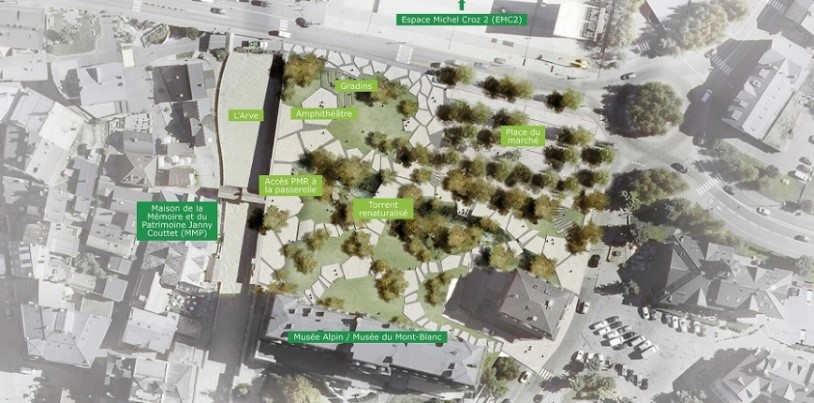Biodiversity and Science

Biodiversity and Science
Nature in the city! The greening of the Place du Mont-Blanc is underway!
Renovation works have been carried out at the Chalet Col des Montets and its surroundings in order to renovate the premises and offer a new and beautiful awareness-raising space to the different audiences.

Orientation tables, totems or educational panels...
10 viewpoints have been installed to allow visitors to get an "intelligent" reading of the landscape or to shed light on the history of several emblematic natural sites in the Chamonix-Mont-Blanc valley.
5 new thematic trails in the valley are now accessible!
Based on the theme of "climatic adventure", these 5 routes, which can be fun or more scientific, offer a scenario and an intrigue to invite visitors to follow in the footsteps of the emblematic scientist Joseph Vallot and members of his family, who were already questioning the evolution of the climate and the landscape of the Chamonix valley in the 19th century. A digital application has also been developed to find the routes and information.
Several projects to promote knowledge tourism or science tourism in the destination are also underway! New experiences to discover!
The CREA :
Based in Chamonix for 25 years, CREA Mont-Blanc, Centre for Research on Altitude Ecosystems, is a scientific NGO recognised by the United Nations.
The Chamonix Mont-Blanc Valley is a real open-air laboratory for life sciences for this organisation!
Its mission is to explore and understand the impact of climate change on biodiversity, and to share its knowledge with decision-makers and citizens to encourage them to act more responsibly.
An expert in alpine ecology and data science, CREA Mont-Blanc has put participatory science at the heart of its approach by involving researchers, decision-makers and the general public in its observatory of mountain biodiversity and climate change.
For several centuries, scientists and the curious have been trying to understand life in the Mont Blanc region, a site marked by its diversity of altitudes, climatic conditions and species. Today, the changes have become so rapid and visible that the massif has become an invitation to measure the evolution of biodiversity and to understand the issues involved.
Around Chamonix, a wide variety of habitats are found within a small geographical area. The altitude, topography and exposure shape this wide range of microclimates. In summer, there is a difference of more than 15°C between the average temperatures in the lower valley and the upper mountains. Over the 4,300 metres of difference in altitude between Le Fayet or Martigny and the summit of Mont Blanc, this is a climatic difference equivalent to that observed over 4,300 kilometres in latitude, i.e. a journey from the Mediterranean to Greenland in less than 20 kilometres!
The CREA director's message: "When you come to the Chamonix Mont-Blanc Valley, you come to touch the challenges of the 21st century and go beyond the facts. It's a bit like being in the shoes of Horace Bénédict de Saussure.
You make a climatic journey that you don't make anywhere else!
The Chamonix Valley has always been a territory of exploration and pioneering. The valley's natural environments have a major role to play in the Mont Blanc massif, since they will certainly become a real refuge for species in difficulty in other regions."

Retrouvez l'article sur notre blog :
Le CREA Mont-Blanc : un laboratoire à ciel ouvert pour les sciences du vivant
Découvrez SPOT, la plateforme des sciences participatives ouvertes à tous et participez à votre façon :












